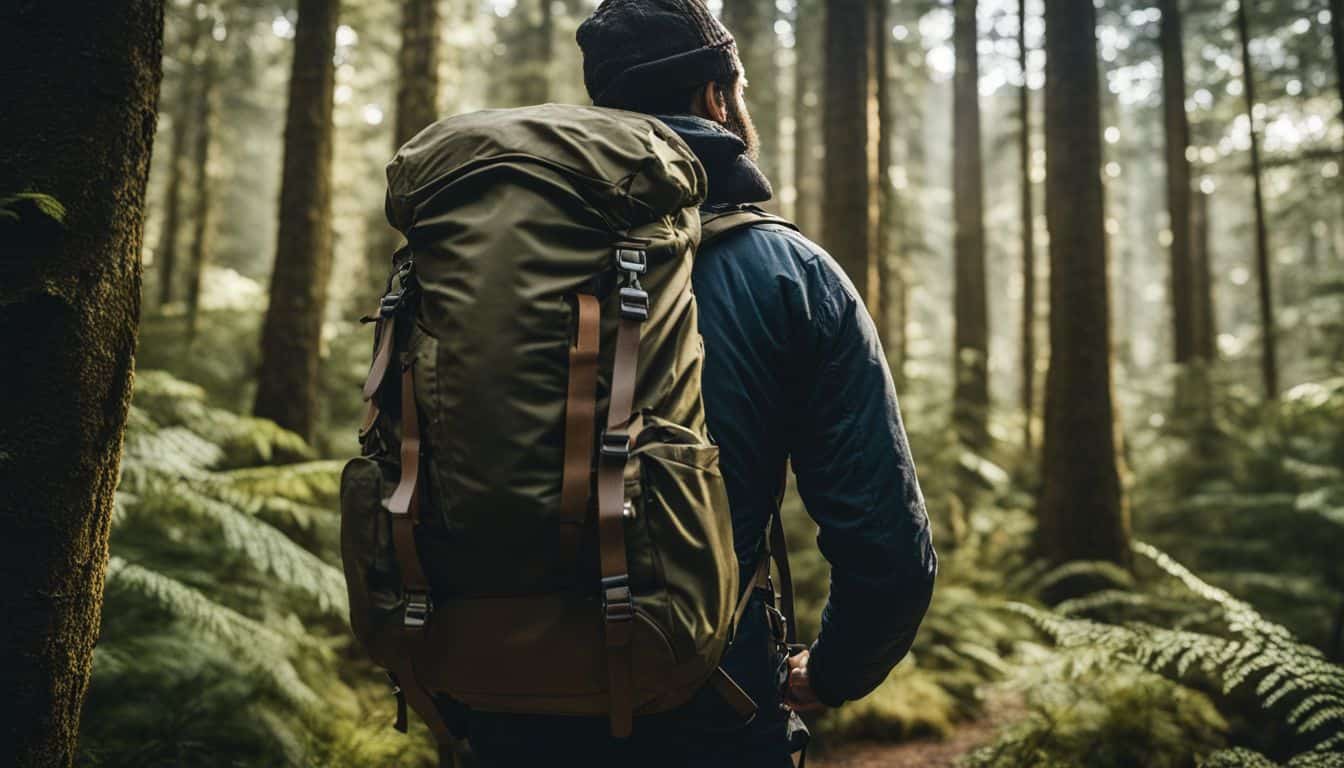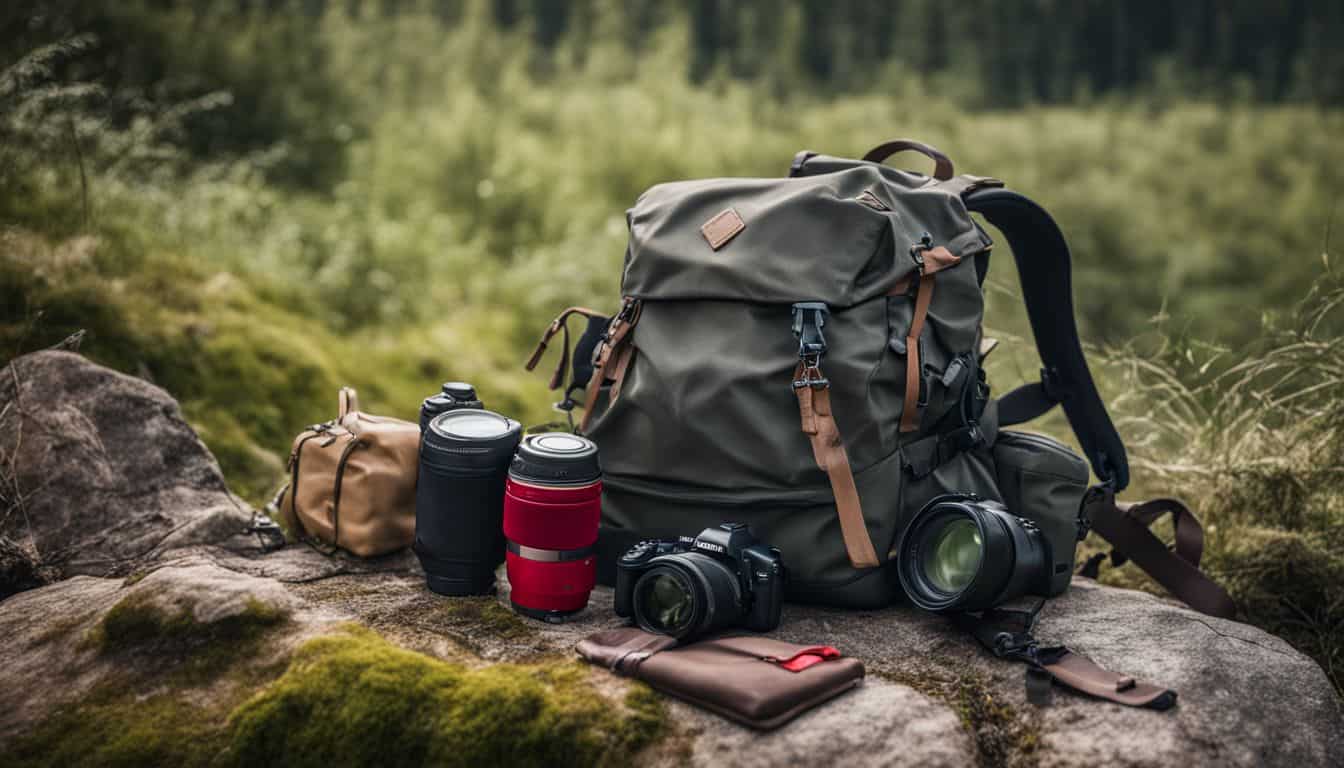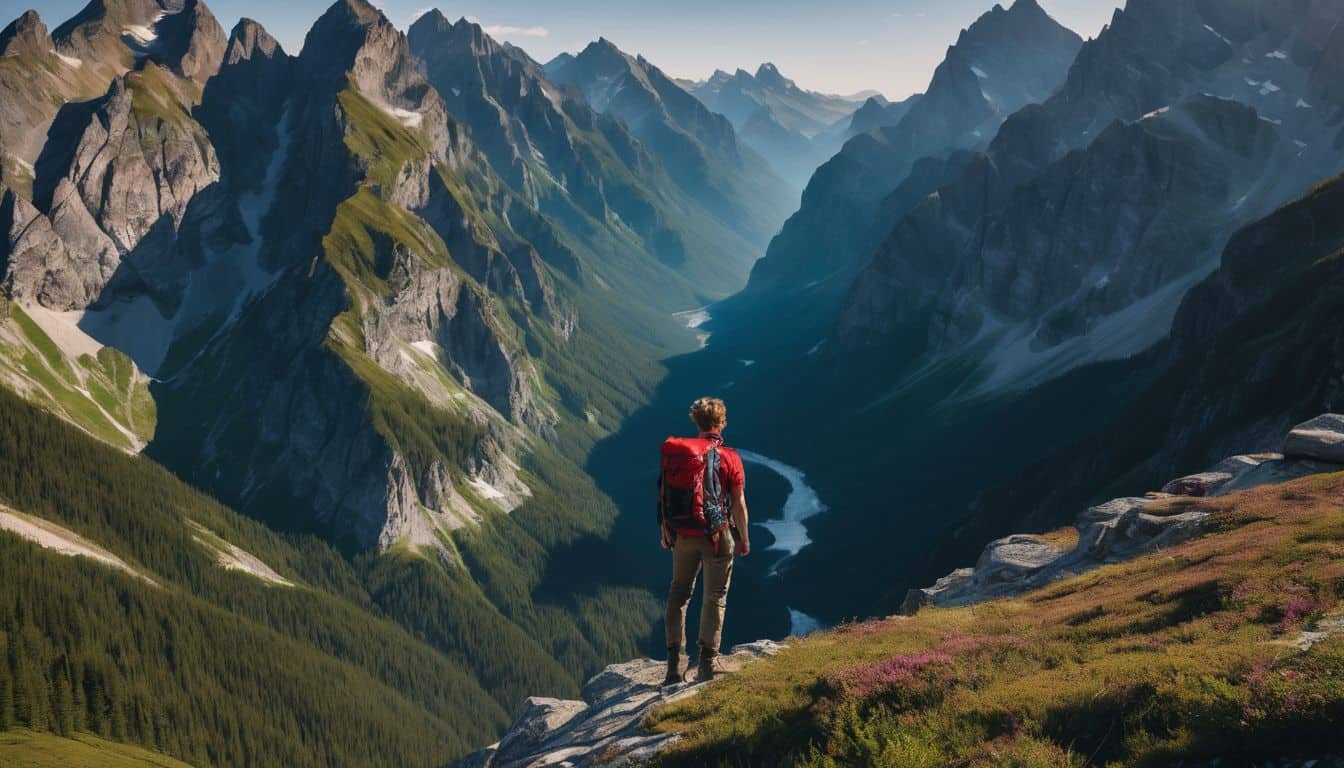The great outdoors can sometimes throw us curveballs, can’t it? Personally, I’ve had my fair share of surprises which made me realize how important basic survival skills really are.
To help you be better prepared for such unexpected encounters, this blog is my humble attempt to arm you with nine essential ways to help you thrive in any wilderness survival situation.
Curious to learn more? Together, let’s dive into an exciting journey towards mastering the art of wilderness survival!
Key Takeaways
- Taking inventory of your supplies is crucial for wilderness survival. Assessing what you have and planning ahead can help you stay prepared and avoid running out of vital resources.
- Maintaining a positive mindset and emotional resilience are important in wilderness survival. By staying optimistic, adaptable, and managing stress effectively, you can increase your chances of thriving in challenging situations.
- Using the S.T.O.P. Method (Stop, Think, Observe, Plan) allows you to assess the situation before taking action in a survival scenario. This approach helps you make informed decisions and remain focused during emergencies.
- Avoiding small mistakes and paying attention to detail is key for survival in the wilderness. Even minor errors can have dangerous consequences, so being diligent in assessing risks and taking precautions is necessary.
- Carrying reliable tools such as a compass, fire starter, knife, topographic map, and first aid kit is essential for wilderness survival. These tools provide means for navigation, starting fires, cutting branches or preparing food while ensuring safety.
- Finding clean water sources is crucial for wilderness survival. Identifying flowing rivers or streams along with other options like lakes or rainwater collection will ensure access to safe drinking water.
Wilderness Survival Basics: An Overview

Venturing into the boundless expanse of the great outdoors truly is a richly rewarding experience. However, as audacious adventurers, we must recognize that mastering the basic survival techniques could quite literally mean the difference between life and death in unforeseen circumstances.
When immersed in nature’s untamed beauty, it isn’t just about having all fancy gear and cutting-edge equipment; rather, it’s about fostering mental resilience and arming ourselves with practical wisdom.
Take crafting makeshift shelters for instance – this skill can be a real lifesaver when facing extreme weather conditions under an open sky. Meanwhile, kindling fires seems almost synonymous with wilderness survival.
A crackling fire doesn’t just provide much-needed warmth during nippy nights or means to cook up some grub; it’s indeed our beacon of hope in inviting potential rescue parties if ever we lose our way under nature’s vast canopy.
So buckle up! The aim here is to impart you with essential wilderness survival tips that will have your back as you brave possible challenges amid Mother Nature’s raw grandeur.
Take Inventory of Your Supplies
When it comes to wilderness survival, one of the first things you should do is take inventory of your supplies.
Importance of assessing available resources
Assessing what you have is key to staying alive in the wild. You must check every item in your bag. Every tool, food bit, and drop of water counts. You don’t want to run out of vital stuff when far from home.
Smart people avoid this risk by keeping an eye on their inventory all the time. It’s like what stores do to keep items stocked up for buyers. This method also helps find useful trends.
For example, a study shows goods often run out on specific days each week. If we apply a similar approach to wilderness survival, we can plan better and stay safe more effectively.
Necessary items for survival
Going into the wild, I always take some necessary items for survival. Here is my list:
- A map and compass: I never leave without these. They keep me on track.
- Water: Staying hydrated is key to staying alert and well.
- Food: Lightweight, easy-to-eat food like nuts and dried fruit give me energy.
- Knife: I use it for many tasks from preparing food to building a shelter.
- Shelter gear: Tents or tarps are light but offer protection from harsh weather.
- First Aid Kit: For any cuts or injuries, having a first aid kit can be a life-saver.
- Fire starting equipment: These tools can start a fire for warmth and cooking even when matches are not available.
- Signaling devices: Whistles or mirrors can help signal for help in emergencies.
- Water filtration system: It makes sure the water I drink is clean and safe.
Mental Preparedness
Maintain a positive mindset and develop emotional resilience to navigate challenging situations in the wilderness.
Maintaining a positive mindset
Building and maintaining a positive mindset is crucial in wilderness survival. When faced with challenging situations, it can be easy to become overwhelmed or discouraged. However, having a strong mental state can make all the difference in your ability to persevere and excel.
By focusing on the positives, practicing resilience, and staying mentally strong, you can increase your chances of survival. Remember that adaptability is key in any survival situation – being able to adjust and stay optimistic will help you make rational decisions and keep moving forward.
With a positive attitude and mindset, you can cultivate the mental toughness needed to overcome any obstacles that come your way.
Emotional resilience in challenging situations
Emotional resilience is really important when you’re in challenging situations, especially if you’re surviving in the wilderness. It means being mentally prepared and having the strength to cope with difficult emotions.
Resilience helps you stay calm and stable, even when things get tough. This includes managing stress, problem-solving, and staying positive. By being emotionally resilient, you can bounce back from setbacks and adapt to your surroundings.
It’s a process that involves both your own qualities and the environment you find yourself in. So, remember to work on developing your emotional resilience for better survival skills in challenging situations!
The S. T. O
The S.T.O.P. Method is a crucial approach in wilderness survival, allowing you to assess the situation before taking any action.
Stop, think, observe, plan approach
When faced with a survival situation, it’s important to remember the “Stop, Think, Observe, Plan” approach. This approach can help you make intelligent decisions and increase your chances of survival. Here’s how it works:
- Stop: Take a moment to pause and collect yourself. Remaining calm is key in a survival situation.
- Think: Analyze the situation and assess what needs to be done. Consider factors like available resources, potential dangers, and any immediate needs.
- Observe: Survey the terrain and look for familiar landmarks or signs that can help you navigate or find help. Pay attention to your surroundings and gather as much information as possible.
- Plan: Based on your analysis and observations, come up with a plan of action. Determine your priorities and decide what steps to take next.
Assessing the situation before taking action
When facing a survival situation in the wilderness, it is crucial to assess the situation before taking any action. This assessment involves understanding the importance of evaluating risks and making informed decisions based on available information.
Just like military tactics, assessing the situation helps determine priorities and develop a plan of action. By controlling panic and using techniques like the STOP method (Stop, Think, Observe, Plan), one can effectively evaluate their surroundings and make smart decisions that increase their chances of survival.
It’s all about being prepared mentally and physically for whatever challenges may come your way.
Avoiding Small Mistakes
Understanding the impact of minor errors in the wilderness and paying attention to detail are crucial for survival.
Understanding the impact of minor errors in the wilderness
In the wilderness, even small mistakes can have dangerous consequences. That’s why it’s so important to avoid these errors when you’re trying to survive. When you make a mistake in the wild, it can quickly escalate into a hazardous situation.
For example, forgetting to pack an essential item like a knife or a first aid kit could put your survival at risk. Another common mistake is not paying attention to detail. In the wilderness, every little decision matters, and overlooking something as simple as checking for clean water sources or properly securing your shelter can lead to serious problems.
It’s crucial to understand that mistakes are magnified in this environment where resources are limited and help might be far away.
Importance of attention to detail
Attention to detail is absolutely essential in wilderness survival. Even the smallest mistakes can have a big impact and potentially put your life at risk. That’s why it’s so important to be diligent, precise, and thorough in everything you do.
By paying close attention to the details, you can identify potential hazards and take necessary precautions to avoid them. This includes properly assessing your supplies, making sure you have all the necessary tools, and being vigilant in assessing your surroundings for any potential dangers.
Being meticulous and attentive helps ensure that you utilize your resources effectively and make informed decisions that could mean the difference between life and death. So remember, every little detail matters when it comes to surviving in the wilderness.

Essential Tools to Carry
Carrying reliable tools is crucial for wilderness survival.
The significance of having reliable tools
Having reliable tools is crucial for wilderness survival. When you’re out in the wild, your gear becomes your lifeline. By carrying essential tools like a knife, fire starter, cordage, water purification methods, a first aid kit, and navigation tools, you can be prepared for any situation that comes your way.
These tools help ensure your safety and provide the means to meet basic needs like food and shelter. Remember, while tools are important, it’s also essential to have the skills and knowledge of how to use them effectively.
With reliable gear at hand, you can excel in wilderness survival and increase your chances of staying safe in challenging environments.
Examples of useful tools in the wilderness
As a survival enthusiast, I know the importance of having the right tools in the wilderness. Here are some examples of useful tools that can help you excel in your wilderness adventures:
- Compass: A reliable compass is crucial for navigation and finding your way in unfamiliar terrain.
- Fire Starter: Having a fire starter, like a waterproof lighter or ferro rod, will help you start fires for warmth, cooking, and signaling for help.
- Survival Knife: A sturdy survival knife or multi-tool is essential for various tasks such as cutting branches, preparing food, and building shelters.
- Topographic Map: A topographic map provides detailed information about the landscape, including elevation changes and water sources, to help you plan your route.
- First Aid Kit: Always carry a well-stocked first aid kit to treat injuries and emergencies that may occur during your wilderness journey.
Obtaining Clean Water
Finding and purifying water is crucial for wilderness survival.
Identifying water sources
When it comes to surviving in the wilderness, finding clean water sources is crucial. In nature, rivers, streams, and creeks that are flowing are the best places to look for fresh water.
You can also collect water from other sources like lakes, ponds, and even rainwater. Plants can provide condensation that you can collect as well. In rural areas away from pollution, rainwater is a significant source of drinking water.
Remember to assess different options for water sources to ensure you have enough supply for survival.
Techniques for water filtration and purification
When it comes to surviving in the wilderness, finding clean water is crucial. Here are some techniques for filtering and purifying water that can help ensure your safety:
- Boiling water: Heat water to a rolling boil for at least one minute to kill most pathogens and make it safe to drink.
- Filtration pumps: Use portable water filters or purification pumps to remove debris, bacteria, and other contaminants from untreated water sources.
- Purification drops and tablets: These convenient options can effectively disinfect your water by killing bacteria, viruses, and parasites. They are easy to carry and use.
- Water distillation: If you have the means, distilling water is the safest method for purification. It involves evaporation and condensation to remove impurities like salt, heavy metals, and chemicals.
- Survival water filter: Create a DIY filter using natural materials such as charcoal, sand, and gravel layered in a container. This can help remove sediment and larger particles from the water.
Creating a Safe Shelter
Building a sturdy shelter is crucial for protection and comfort in the wilderness.
Importance of shelter for protection and comfort
Creating a safe shelter is extremely important for both protection and comfort in the wilderness. When you are out in the wild, having a shelter can keep you safe from harsh weather conditions like rain, wind, or extreme temperatures.
It also provides a sense of security and privacy. Having a sturdy shelter can protect you from potential dangers such as wild animals or insects that may pose a threat to your safety.
Moreover, having a shelter gives you a place to rest and recover from physical exertion. It allows you to conserve energy and regain strength for other survival tasks. Additionally, it provides psychological comfort by giving you a space where you feel secure and at ease.
Remember that different types of shelters can be built depending on the available resources and your specific needs. Some common types include lean-tos, debris huts, or natural rock formations.
Different types of shelters in the wilderness
When it comes to wilderness survival, knowing how to create a shelter is crucial. There are different types of shelters you can build in the wilderness, each with its own advantages and suitability for different situations. Here are some options to consider:
- Lean-to: A lean-to shelter is made by propping a long pole against a sturdy tree and laying branches or foliage against it. This provides a slanted roof for protection from rain or snow.
- Teepee: Similar to the traditional Native American structure, a teepee shelter is created by placing several long poles together in a cone shape and covering them with leaves, grass, or bark.
- Debris Hut: A debris hut involves creating a framework of sturdy branches and covering it with layers of insulating materials like leaves, grass, or even pine needles.
- A-frame Shelter: As the name suggests, this type of shelter resembles an ‘A’ shape. It is built by leaning two long poles against each other and securing them at the top with smaller branches or rope.
- Cave/Sheltered Rock: If you come across a natural cave or rock overhang, it can provide instant protection from the elements.
Finding Food
Foraging and hunting are the key principles to finding food in the wilderness, as you learn to identify edible plants and animals that can sustain you in your survival journey.
Basic principles of foraging and hunting
When I’m out in the wilderness, finding food becomes a top priority. The basic principles of foraging and hunting help me to sustain myself in these challenging environments. Foraging is all about searching for and obtaining food sources or medicinal plants from nature.
It’s important to observe my surroundings and identify edible plants that might be more tender or nutritious. Hunting involves tracking and catching animals for sustenance. These hunter-gatherer practices have been used by humans for thousands of years to survive in the wild.
Being able to find food gives me a sense of self-sufficiency and helps me connect with nature on a deeper level.
Edible plants and animals in the wilderness
In the wilderness, there are many plants and animals that can be eaten to survive. Let’s take a look at some of them:
- Berries – Blueberries, raspberries, and blackberries are delicious and packed with nutrients.
- Nuts – Acorns, walnuts, and hazelnuts provide protein and healthy fats.
- Wild greens – Dandelion leaves, chickweed, and lamb’s quarters can be cooked or eaten raw.
- Insects – Ants, crickets, and mealworms are high in protein and can be roasted or added to meals.
- Fish – Catching fish in rivers or lakes provides a good source of lean protein.
- Small game – Squirrels, rabbits, and birds like quail or grouse can be hunted for meat.
- Edible roots – Wild carrots, cattails’ roots, and wild onions offer sustenance.
- Seaweeds – In coastal regions, seaweeds like kelp or nori can be harvested for nutrition.
- Mushrooms – Some mushrooms like morels or chanterelles are safe to eat if you know how to identify them.
Starting a Fire Without Matches
To start a fire without matches, it is crucial to learn and practice alternative fire-starting techniques using natural resources like friction, sparks, or solar energy.
Importance of fire for warmth, cooking, and signaling
Fire is incredibly important for survival in the wilderness. It provides warmth, allowing us to stay comfortable and avoid hypothermia, especially in colder climates. Fire can also be used for cooking food, ensuring we have a source of sustenance in the wild.
Additionally, fire can act as a signal to attract rescuers and let them know our location during emergencies. It’s remarkable how something as simple as a flame can provide so much heat, safety, and even comfort in the wilderness.
Techniques for fire starting without traditional tools
Starting a fire without traditional tools can be challenging, but with the right techniques, it is definitely possible. Here are 6 fascinating ways to start a fire in the wilderness without matches or a lighter:
- Fire Plow Method: Use a long, flat piece of wood and rub it against another piece of wood to create friction. The heat generated will eventually ignite some tinder.
- Friction Fire Starting: This method involves using a bow drill or hand drill to create friction between two pieces of wood. The friction creates an ember that can be transferred to a bundle of tinder to start the fire.
- Flint and Steel: Strike a hard object like flint against steel to create sparks. Catch those sparks in some fine tinder and blow gently to ignite the flames.
- Magnifying Glass: Use the power of sunlight by focusing it through a magnifying glass onto some dry tinder. The intense heat from the concentrated light will eventually start a fire.
- Solar Ignition: Reflect sunlight off metallic objects like cans or mirrors onto some dry tinder, positioning them in such a way that they concentrate the light and generate enough heat to ignite the fire.
- Chemical Reactions: Certain chemicals like potassium permanganate and glycerin can be combined to create an exothermic reaction that generates enough heat to start a fire.
Conclusion on Wilderness survival basics
In conclusion, mastering wilderness survival basics can greatly increase your chances of excelling in the outdoor environment. By taking inventory of your supplies, cultivating a positive mindset, and using techniques like the S.T.O.P method, you’ll be better prepared to make informed decisions in challenging situations.
Additionally, learning essential skills like finding water sources, building a shelter, and starting a fire without matches will further enhance your ability to thrive in the wilderness.
So remember to practice these tips and techniques regularly to excel in any survival scenario.
FAQs on Wilderness survival basics
1. What are some essential wilderness survival skills?
Essential wilderness survival skills include building a shelter, finding and purifying water, starting a fire, navigating without a compass, and identifying edible plants.
2. How can I find water in the wilderness?
You can find water in the wilderness by looking for signs such as vegetation or animal tracks that indicate the presence of water sources like rivers, streams, or ponds. You can also collect dew or rainwater with improvised containers.
3. What should I do if I get lost in the wilderness?
If you get lost in the wilderness, stay calm and try to retrace your steps to find familiar landmarks. If you cannot find your way back, it’s best to stay put and create signals for rescuers while conserving energy.
4. Is it safe to eat wild berries or plants?
Not all wild berries or plants are safe to eat; some can be poisonous. It is crucial to have proper knowledge of edible plants through research or training before consuming anything found in the wild.
5. Should I pack any specific items for wilderness survival?
It is recommended to carry essentials like a knife, waterproof matches/lighter for starting fires, a map/compass (or GPS), first aid kit, emergency blanket/shelter/tarp for staying dry and warm even during unexpected situations while venturing into the wilderness.





Leave a Reply